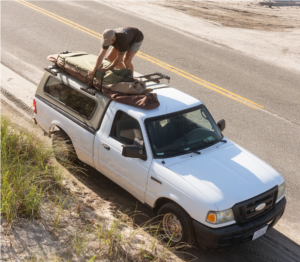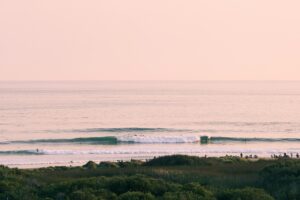It’s a hectic island. There’s traffic, there’s pollution, there are crowds in the water, there are crowds out the water. It’s full-on. But with that, comes all the trappings of your favorite surf destination, fun waves, tropical temps, party scene, and a low cost of living. But where does one go on such a small island to escape all this? This tiny slice of the North West Balinese coast might have the answer. Here’s everything you need to know about surfing Balian.
Overview
- Consistent
- Easy to surf
- Not much else to do
- Crowds
Table of Contents
Best Time of Year
The best time of year to surf Balian is any time. Blain is super consistent and almost always has waves, It is considered as North West Bali’s swell magnet. So while the wet season (April – October) produces the largest waves, Balian can have smaller, better waves during the dry season (October- April).
Balian - Surf Spot Breakdown
Balian is an a-frame reef breaking over cobbles. While it has both lefts and rights, the right is much shorter, whereas the left is longer, with multiple sections. The wave breaks fat, in deeper water out the back, and rolls through the lineup. Generally, it’s a fat, easy-to-surf wave, but if you pick the right ones, some of the inside sections can wall up and provide a good wall for advanced surfers. Check out what the surf’s doing in Balian here.
Other Balian Surf Spots
There is only one well-known break in Balian itself, but the lineup is a large playing field, so it can often feel like a couple of different waves in one. Alternatively, you could surf the beach break next to it, or head North to Medewi for some long lefts, or down to Canggu for punchy beach break peaks. Check out my guide to surfing Canggu here.

Is Balian Sharky?
Balian has a reputation as Bali’s “sharkiest” surf spot and is the spot responsible for most of Bali’s attacks. For more information on Balian sharks, check out my full video breakdown of the place here. Balian is a river mouth break, so bull sharks like to hang around in the area, particularly after heavy rain. Avoid surfing Balian after intense rainfall, or wherever the water is brown and murky, this is when the majority of Balian attacks have happened. For more information, check out my surfing and sharks post.
Tips for Surfing in Balian
Crowds
Balian is crowded. The peak is such an easy forgiving wave to surf, that it does attract the people. On smaller days, the place is excellent for intermediate surfers, or anyone who just wants something mellow. That said, the playing field is large and it’s pretty easy to get waves even on the most packed days.
The Wave
Balian is a fat wave and might lack the power of some of Bali’s other top breaks, For example, you’re not going to find the same intensity as you will in Uluwatu or even at the beach break in Canggu.
Where to Stay?
Pondok Pitaya
Pondok Pitaya is one of the best places to stay for surfing in Balian. The hotel puts you right on the black sands and you’ll be able to check the waves from your room. Complete with great wifi, lush green surroundings, a pool, and an on-site restaurant, there’s nowhere better to stay in Balian. Rooms start from $66 per night. Check it out here.
Balian Paradise Resort
Balian Paradise Resort is a wicked, and affordable option to stay close to the waves at Balian. With clean comfortable, rooms, A/C, and solid wifi, this place has everything you need! Prices from $17 per night. Learn more here.
Final Words
While Balian’s wave quality might not match other spots on the island, if you want somewhere to escape the hustle and bustle of other surf towns further south, Balian serves as a great, peaceful refuge. Expect fun, but super mellow peaks, crowds (but you’ll still get waves), and a town to relax and enjoy Bali, this is your spot. For more info, check out my full video to Balian here. Any questions, please comment below.




